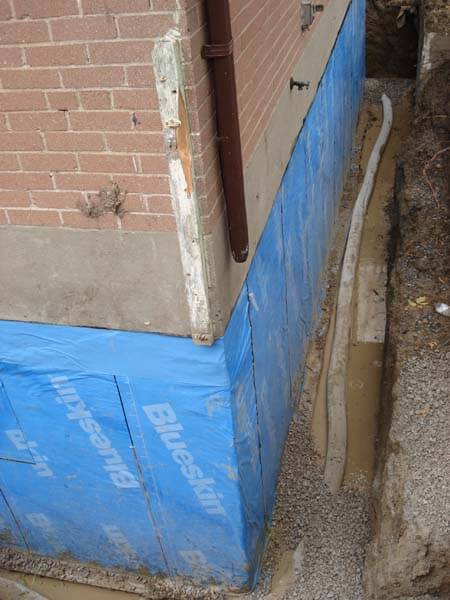How to Keep Your Waterproofing Systems

Waterproofing is a crucial aspect of residential and building maintenance that frequently goes overlooked, but its importance cannot be overemphasized. Whether you are a property owner looking to protect your investment or a business owner safeguarding your business property, grasping waterproofing systems is key in preventing costly water damage and enhancing longevity. From home basements to commercial rooftops, effective waterproofing can save you thousands in repairs, as well as provide reassurance knowing that your property is secure against humidity issues.
In this guide, we will examine how to maintain your waterproofing systems effectively, discuss common myths about waterproofing, and highlight the key areas that require attention, such as basements, restrooms, and rooftops. With the right knowledge and tools, you can guarantee your property remains protected from water damage, mold, and other undesirable effects of too much moisture. Equipped with this information, you will be better prepared to identify the signs that waterproofing is necessary before it's too late, making smart decisions that will protect your investment for years to come.
The Importance of Waterproofing in Home Maintenance
Waterproofing is an essential component of home maintenance that safeguards your property from the harmful effects of moisture. Moisture intrusion can lead to serious issues such as the development of mold, damage to the structure, and the deterioration of building materials. By investing in waterproofing, homeowners can protect their property and ensure a healthier living environment. Ignoring waterproofing can lead to costly repairs in the future, making it a vital consideration for all homeowner.
In addition to staving off water damage, proper waterproofing enhances the overall durability and longevity of various structures in your home. This includes basements, roofs, and external walls, where water can easily get inside if not adequately protected. Regular maintenance of waterproofing systems can help you prevent extensive renovations, thereby avoiding you thousands of dollars in repair costs. Moreover, a well-maintained waterproofing system can enhance energy efficiency by lowering moisture levels that may affect heating and cooling systems.
Finally, waterproofing supports the stability of your home’s foundation, which is crucial for stability and safety. A damaged foundation due to water damage can lead to significant structural issues, making it crucial to address waterproofing needs proactively. Homeowners should consistently assess their property's waterproofing needs, acting quickly at the first signs of wear or moisture intrusion. By prioritizing waterproofing in home maintenance, you are not just protecting your home from short-term threats but also ensuring its long-term health and value.
Choosing the Appropriate Waterproofing Method
Selecting the appropriate method of waterproofing for your home is essential to preventing water damage. Different areas of your home, such as basements, roofs, and walls, may require specific approaches to ensure optimal protection. Consider the unique circumstances of each space, such as exposure to moisture, pre-existing damage, and regional climate factors. This awareness will guide you in choosing between interior or exterior waterproofing options, as well as deciding between a do-it-yourself method or hire a contractor.
Interior waterproofing methods mostly concentrate on preventing moisture from infiltrating through walls and floors. This usually includes sealants, drainage systems, and sump pumps. On the other hand, exterior waterproofing methods are crafted to prevent water from entering your home. This may include using waterproof coatings, installing french drains, or sloping the landscape away from the foundation. Evaluating the nature of your water problems will guide you in deciding which method is better for your requirements.

It's also important to take into account the long-term implications of your choice. While DIY methods may seem affordable initially, they can sometimes lead to more significant issues later if not executed correctly. Hiring you could try this out qualified waterproofing contractor can ensure the job is completed properly, potentially saving a significant amount in repairs. Ultimately, Aluneed waterproofing will rely on a thorough evaluation of your property's needs and your budget for the project.
Typical Waterproofing Blunders to Avoid
One of the most major mistakes homeowners make is overlooking to assess the specific needs of their property before applying waterproofing solutions. Many people believe that all waterproofing products or techniques are generally effective, but this is not the case. Each building has specific characteristics and vulnerabilities that require customized solutions. Failing to conduct a thorough inspection can lead to insufficient protection, resulting in costly water damage down the line.
Another common error is attempting DIY waterproofing without sufficient knowledge or experience. While there are many products promoted for easy application, improper techniques can lead to more harm than good. Homeowners often overlook essential steps, such as pre-treatment, which can compromise the bonding of waterproofing materials. It is important to follow manufacturer instructions carefully or consider hiring professionals when the project requires expertise.
Lastly, neglecting regular maintenance is a mistake that many miss. Waterproofing is not a temporary fix; it requires ongoing inspection and upkeep to ensure its efficacy. Seasonal checks can help identify any wear and tear, enabling timely repairs before major damage occurs. Regular maintenance prolongs the lifespan of waterproofing systems and safeguards your investment in both the near and long term.
